How geysers work
|
|
| Hypothetical cross section through the geyser's conduits: |
P: pressure, T: temperature. The diagrams refer to the bottom of the conduit as shown on the left: |
What is going on inside the geyser's conduits and how this affects the action on the surface. Obviously we have simplified matters quite a bit – but you will get the general idea: |
What you see at the surface, provided you are patient enough to wait for the whole duration of an eruptive cycle. Sample images from Clepsydra Geyser: |
|
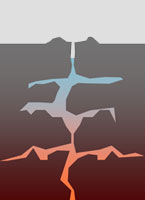 |
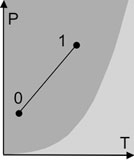 |
Water conduits below the geyser are gradually filled by the influx of water from the surface and of ground water, so the pressure rises: the dot in the diagram goes up. Geothermal heat raises the water temperature: the dot also moves to the right. The water is hottest lower down, but still well below the boiling point (on the surface boiling temperature is 93 °C at the altitude of Yellowstone). The water level is below the surface, so it remains invisible in the real life image on the right. |
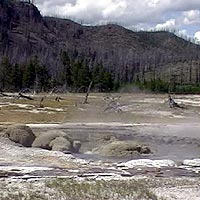 |
|
 |
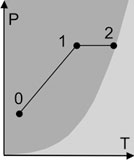 |
Eventually the conduits are more or less full, so the pressure cannot increase any more. The water temperature, however, is still rising: dots 1 to 2. The water deep down in the geyser's conduits is nearly at the boiling point. The dark area in the diagram shows pressure-temperature combinations for which water remains liquid; the lighter grey area on the right indicates steam. |
 |
|
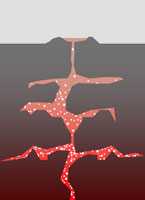 |
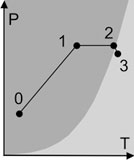 |
Finally boiling starts low down in the geyser's conduits. As steam bubbles have a much lower density than water, some water gets pushed out of the conduits. They vent starts to overflow and possibly some minor fountaining may start. This lowers the pressure inside the conduits: dots 2 to 3. |
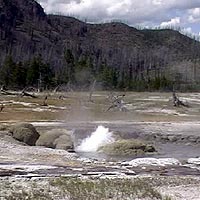 |
|
|
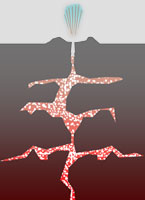 |
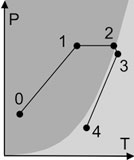 |
Now a runaway reaction starts: As the pressure inside the conduit drops, more and more water flashes into steam, expelling a mixture of water and steam through the vent. The geyser is now in its eruptive phase. Pressure and temperature drop rapidly inside the conduit: dots 3 to 4. |
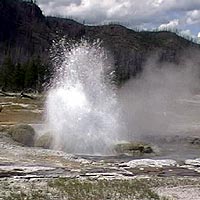 |
|
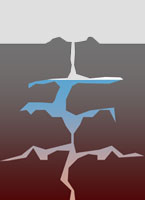 |
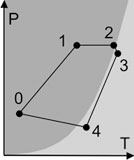 |
After too little water is left inside the conduits, the eruption stops. Once more water from the surface and ground water starts to refill the conduits: dots 4 to 0. As water from the surface is cooler it takes some time to heat up sufficiently for the next eruption to start. |
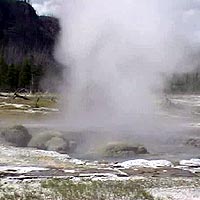 |